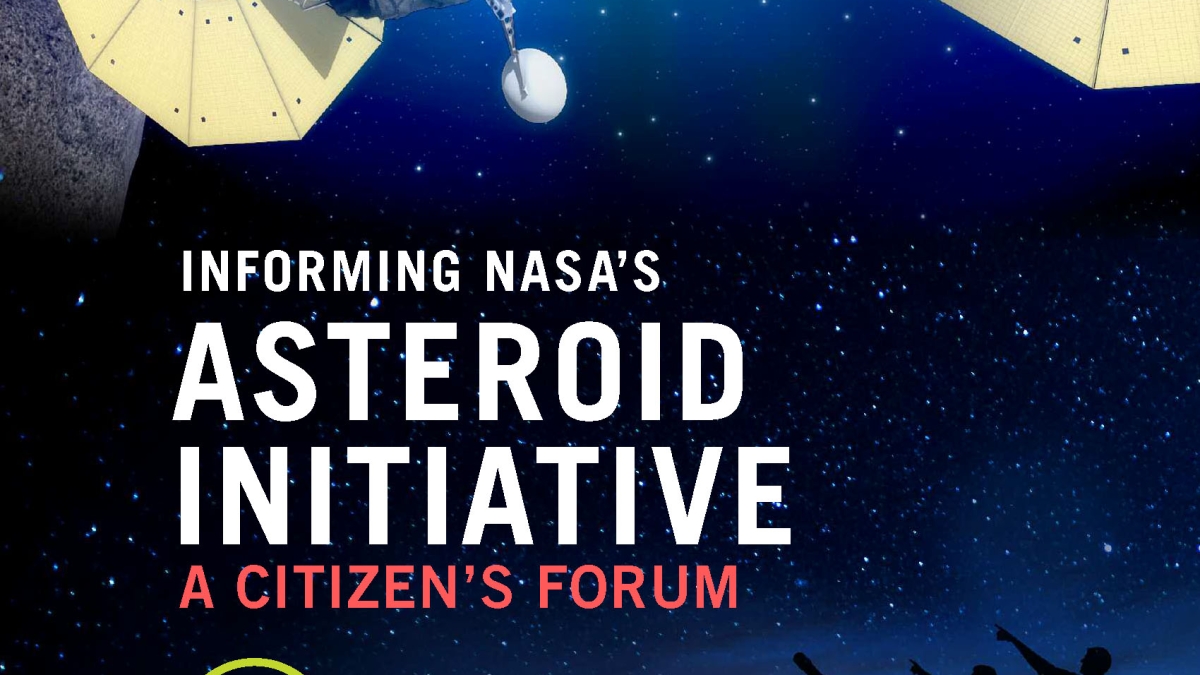ASU-led partnership engages citizens in NASA's Asteroid Initiative

Informing NASA's Asteroid Initiative: A Citizen's Forum
How can humans best protect the Earth from a potentially devastating asteroid impact? Could our ability to study an asteroid assist with both planetary defense and sending humans farther into our solar system? Once humans have advanced their space-exploration capacities, what should a future mission to Mars look like?
Making the public part of discussions such as these is the result of an innovative partnership between NASA and a network led by ASU’s Consortium for Science, Policy & Outcomes (CSPO). That partnership solicited non-expert citizens' opinions on the NASA's future missions as a way to directly engage the public in the space agency's plans. A public report about the program, which describes the process and its outcomes, has recently become available for download.
At two public full-day forums in Boston and Phoenix last November, citizens participated in public deliberations, or “participatory technology assessment,” to learn about, discuss and share their views on several NASA missions. The forums focused on three topics: planetary defense, NASA’s Asteroid Redirect Mission (ARM) and mission scenarios for a journey to Mars. Their input was gathered and delivered to NASA.
"This new way of engaging with the public offers gives ordinary people a chance to learn about and offer their perspectives on important policy decisions," noted David Guston, the director of ASU’s new School for the Future of Innovation in Society and the principle investigator on this project. "Decision makers gain insight into what is important for the citizens whose support they need. In this case, NASA received input for its future missions that will help the agency respond to both the concerns and excitement the public has about space exploration."
CSPO is a founding member of the Expert and Citizen Assessment of Science and Technology (ECAST) network, a group of universities, science centers and nonpartisan think tanks. In leading the ECAST team’s efforts, CSPO collaborated with the Museum of Science Boston and worked closely with NASA managers to host the two forums.
Participants at the daylong forums voiced strong support for implementing space-based asteroid-detection efforts. They indicated a preference for the ARM scenario that involved retrieving a boulder from a large asteroid and bringing it into orbit around the moon for study. And, for the Mars mission, participants balanced cost, schedule and risk in favor of first sending humans into orbit around the Red Planet, along with robotic exploration and potential Mars moon missions.
This project, building on CSPO’s efforts to bring public values into science and technology policymaking, elicited nuanced information from citizens that, as NASA discovered, can be extremely useful for robust decision making.
Preliminary results from the deliberations were shared with NASA managers prior to their ARM decision. In early 2015, NASA announced the ARM option it would pursue — the same mission that forum participants favored by a wide margin. ECAST also performed a detailed analysis of the results, as described in the technical report that was recently provided to NASA, which gives the space agency new knowledge of citizens’ perceptions to consider when planning future missions.
CSPO’s work on the NASA-ECAST project has laid the groundwork for additional engagement programs. Earlier this year, CSPO organized the U.S. component of the World Wide Views on Climate and Energy, a global citizen forum on addressing climate change. The results from those deliberations were just presented to the UN General Assembly in New York. In addition, CSPO and the Museum of Science Boston have recently been awarded a multi-year grant from the National Oceanic and Atmospheric Administration to use that agency's considerable scientific assets to foster climate resilience in communities around the United States.